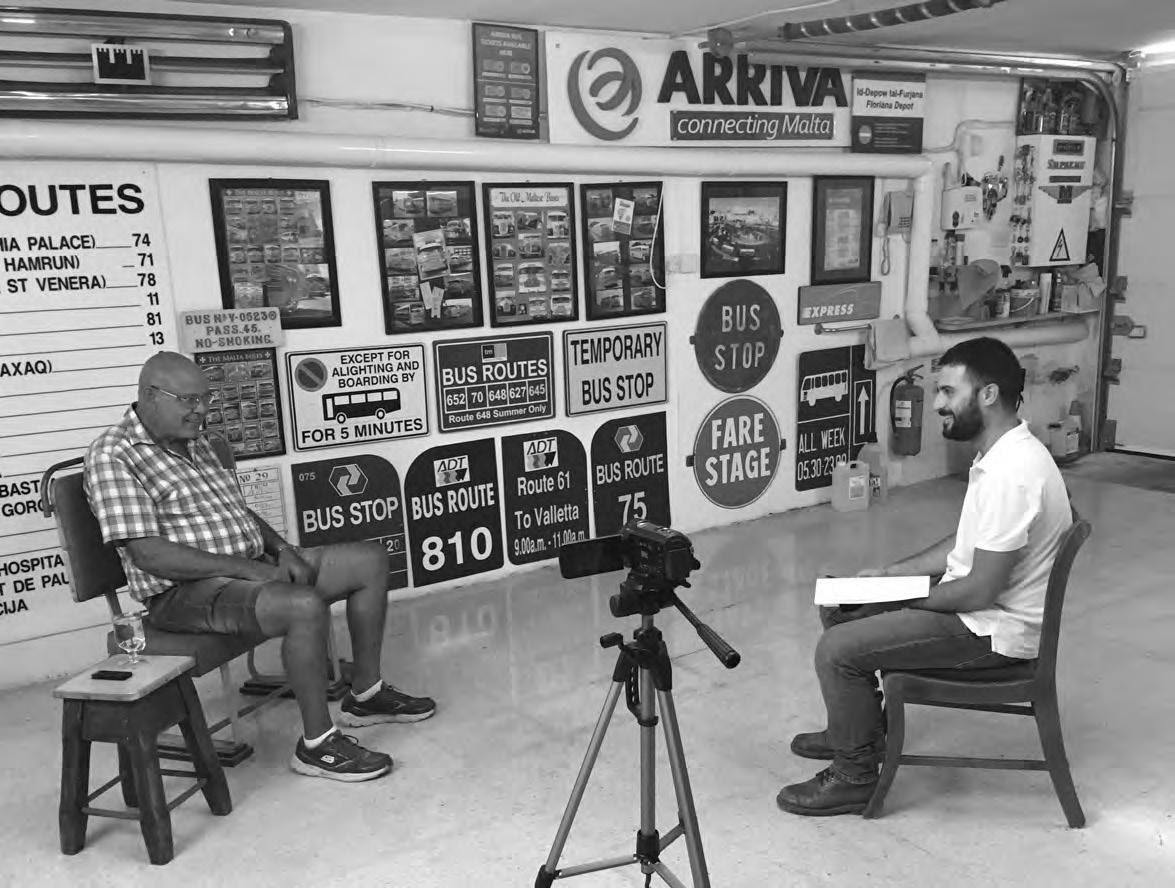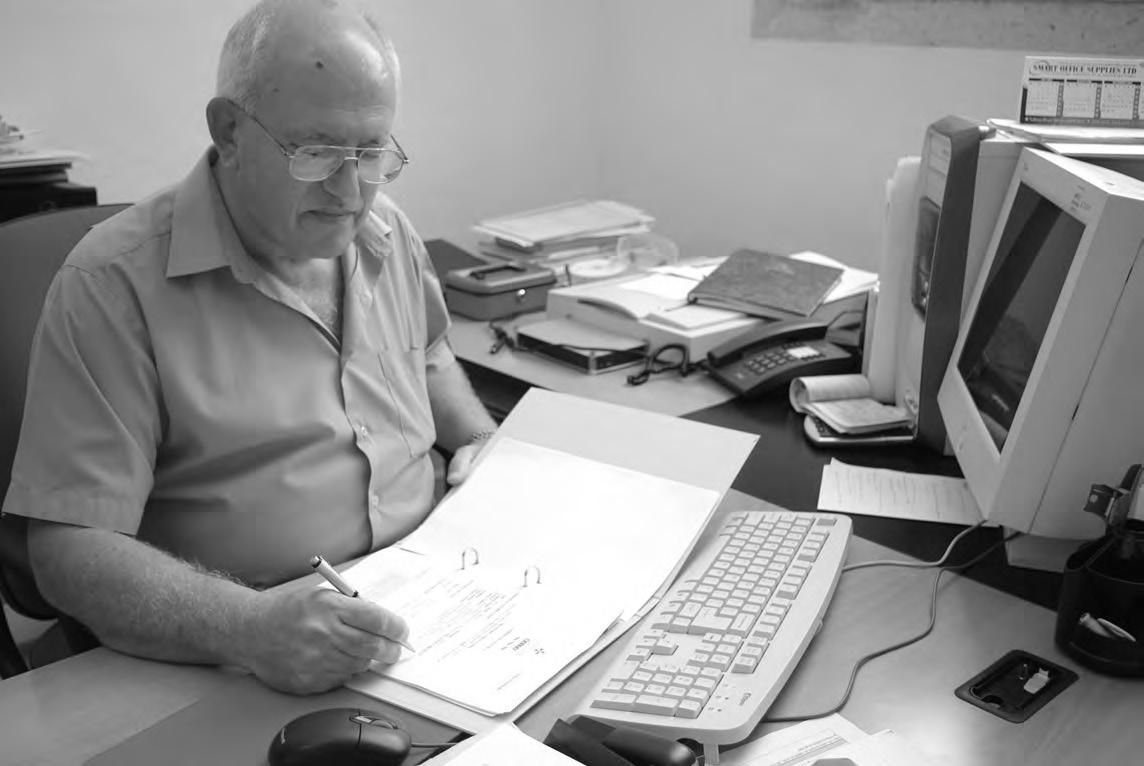
10 minute read
8 Memorja
Yoked farm horses, Siggiewi. 1950-1951 - Philip Pisani Collection
8 MEMORJA 8 MEMORJA
Advertisement
8.1 Introduction
MEMORJA is the oral, sound and visual archive of the National Archives of Malta intending to become the Maltese Islands’ main depositor of national and public memory. By employing cutting-edge research, methodologies, theoretical and archival approaches, Memorja collects, records, transcribes and preserves community/shared and individual memories, oral history/traditions, knowledge and experiences as well as makes them available for research, interpretation and educational purposes.
MEMORJA’s team had started fieldwork in 2017 through face-to-face pre-interview meetings, leading to the creation of networks in the community. These new relationships with individuals from different backgrounds allowed members of the public to share their stories with the project through oral and video interviews and the donation of personal photographs, letters, film reels and artefacts. Given the opportunity to have their experiences documented for future research, these ‘partners’ are today addressing a lacuna often not found in official documentation and are thus providing more balanced and rounded perspectives on numerous themes and subjects.
8.2 Covid-19 pandemic theme
The outbreak of the COVID-19 pandemic and the resulting implementation of social distancing measures meant that fieldwork and face-to-face interviews – the methodology and bedrock of the project – was largely compromised. Research and fieldwork on existing themes had to be curtailed and the MEMORJA team shifted its attention to cataloguing its ever-increasing material.
However, the project was proactive in transforming this challenging situation into an opportunity through the introduction of an initiative: The COVID-19 Pandemic Memory Project. Its aim is to preserve the experiences and memories of the public through the collection of journals and private diaries written during the COVID-19 pandemic. We are also collecting photographs and videos of everyday life during the pandemic, caricatures created by Maltese cartoonists and artists and other media such as newspapers which are paramount in reporting the pandemic’s situation in Malta. In this way, calls for further collaboration with the public enables work on MEMORJA to keep on going.
8 MEMORJA
The current emphasis of this initial phase is to reach out to the public through frequent and extensive media coverage. The NAM has in fact been regularly promoting this new theme through its social media, newspaper articles and virtual interviews on local television. The use of all these different media outlets is critical in raising awareness and instilling interest among people coming from different backgrounds. Anyone interested in depositing their journal is being asked to contact the NAM via email to avoid any direct contact. In this way, the benefit of preliminary contact with such persons is two-fold. First, this enables the archives to form a clear idea on the public’s response towards this initiative. Second, anyone interested would be able to receive a PDF document consisting of two parts.
The first part of the document includes a set of FAQs which have been devised to provide further information on the keeping of the journal. The requirements outlined in this document focus on being unrestrictive to enable people to express themselves naturally. Such recollections would be offering a richer experience to the future reader who would like to understand better what it was like to live during the COVID-19 pandemic. The second part of this document consists of a Donation Declaration Form which needs to be signed by the person donating their journal.
The public response so far has been positive and enthusiastic thanks to frequent media coverage. Many people have gotten
in contact with the NAM, stating their intent to donate their journals. Listed below are the types of people interested in contributing and examples of material they could donate. This indicates that the NAM’s aim of reaching out to different sectors of the community is being achieved:
• The Elderly: Many elderly persons are currently spending great amounts of time in their homes.
This is largely in part due to the health authorities’ recommendation that those aged 65 and over avoid leaving their homes. Many of these individuals have in fact shared with the archives how they have been having more free time on their hands. They have been seeking creative ways by which to pass the time by picking up a variety of hobbies, such as painting and writing.
• Families: Parents have also contacted the NAM, stating their interest in donating their personal diaries for MEMORJA. Many have become homebound due to telework being encouraged by the authorities. Diaries containing personal thoughts on how parents had to adapt to their new work schedules and any challenges involved would surely add another perspective through which one can view the current situation in the future. Parents have also informed us that they are also encouraging their children to maintain a diary about the pandemic. This would
8 MEMORJA
8 MEMORJA

James Baldacchino carrying out a video interview with a former bus owner and driver.
greatly enrich the content of these donations as researchers would be able to examine life during a pandemic through the lens of not only adults but children as well. Such an aspect is especially important since many children had been confined to their homes due to the closure of schools. They had to seek new ways to pass their free time. Furthermore, many also followed virtual classes, which is somewhat quite unusual for the Maltese Islands.
• Maltese living abroad: Thanks to frequent promotion of the initiative, several Maltese living abroad have also informed the NAM that they would like to collaborate. Here, once again the aim of being as non-restrictive as possible is being successfully reached.
• Teachers and lecturers: Several teachers and lecturers have informed the NAM that they have been involving their students in various school projects about the COVID-19 pandemic. Students are being encouraged to come up with creative ways to report their thoughts about the current situation.
• Poets and music composers: A number of poets and composers are also working on artistic projects influenced by the current pandemic. The donation of such material is also welcome as it would show how the pandemic has been inspiring different people to express themselves through unique and original means.
8.3 Outreach
In early 2020, a second group of volunteers – the first one had been in 2018 - had sat down for MEMORJA’s course in public memory and oral history, led by Prof. John Chircop, the project’s academic advisor. As with the previous group, the attendees will deposit their future oral history interviews and data with the project and these developments have led to the NAM increasing its presence and reach throughout the community.
The attendees came from different backgrounds: both the public and private sectors and the University of Malta. The following themes were chosen:
• Ex-curators and Directors of the Museums Department;
• Stories from the Inquisitors’ Palace;
• H.M. Dockyard;
• Traditional Maltese folk-singing (Għana);
• The theatre in Gozo, 1900-1950s.
The project’s first article in a local journal was published in Heritage Malta’s Tesserae, Issue 10 Spring 2020, with another article to follow later this year detailing the work being done on the Covid-19 Pandemic Memory Project. MEMORJA’s second article was published in the fieldnotes section of the Journal of Maltese History, volume 6, number 1 (2019/2020). The latter directly detailed the Covid-19 theme’s focus, the data submitted by collaborators and the public response so far.
8.4 Cataloguing
Due to the Covid-19 situation, face-to-face fieldwork had ground to a halt over 2020. The MEMORJA team therefore shifted its attention to focusing on cataloguing both its everincreasing oral history collection and private audio-visual deposits. Sixty-one sub-fonds – interviewees and their deposits – have been catalogued, for a total of more than 5,500 items. These items consist of audio and video recordings, photographic materials, written accounts – where interviews could not be recorded due to logistical difficulties – interviewees’ correspondence and different types of ephemera. Apart from these tasks, the team had also been transcribing oral history interviews, arguably the most time-consuming task of the project.
Granary group. 1950-1951 - Philip Pisani Collection
8 MEMORJA

8 MEMORJA
The Public Memory Archive The Public Memory Archive has been forwarding its interviews for digitisation and longterm preservation since the project started. Selected topics in this collection include: The Second World War, salt production, farming/agriculture, childhood, school and education, Maltese social life, Maltese theatre and opera, nursing, lace-work, the British Armed Forces, the 1960s political-religious struggle and fashion. Out of more than 1,500 sub-fonds, 193 have been catalogued and the following is the breakdown:
• Interviews - 190 files (audio/video recordings and written accounts). • Transcripts – 184 files • Fieldwork notes – 47 files • Photographic materials – 128 files • Ephemera – 84 files
Other deposits
• Rayden Mizzi collection: 8795 items catalogued consisting of audio and video recordings of church bells and related photographic materials; • May Agius collection: 4615 digital surrogates of mounted transparencies (35mm standard slide) catalogued. This collection mostly consists of landscape photographs of the countryside in Malta and Gozo taken during the 1950s and 1960s; • Oscar Attard collection: 249 digitised glass plate negatives catalogued. These photographs consist of single and family portraits; • Sciortino collection: 929 digitised glass plate negatives catalogued from the first half of the 20th century. This collection consists of political party mass meetings, religious statues and churches;
• St Michael’s Teacher Training College collection: 335 photographs catalogued (of more than 5000) showing daily life of students and events during the scholastic year. • Philip Pisani collection: 1180 items catalogued consisting of photographs and ephemera taken in Malta, Italy and Libya in the early 1950s, by a British soldier on national service. Home videos recorded in the 1970s and 1980s were also donated as part of this collection.

8 MEMORJA

Irene Sestili
8.5 Website
MEMORJA’s website is to be finished and launched later this year. Over the past months, numerous meetings have been held about its structure, its contents and workability. Focus groups consisting of NAM staff members were also brought in to sound their opinions and provide suggestions for future users and researchers to have the best possible experience.
In preparation for the launch, team members have undertaken training in order to have a better understanding of online platforms and to maximise the benefits of the project’s social media campaign.
8.5 Conclusion
MEMORJA is on its way to achieving its objectives. The parameters which had been set out for the project in 2017 have been broadened. The project’s current deposits total 100 oral history interviews and six written accounts, besides the PMA collection which will add significantly to MEMORJA’s holdings in the years to come.
All digitised material will be preserved, catalogued and presented onto the official MEMORJA web portal which should be launched in the coming months.


ANTHONY BONELLO (1947 -2020)
Anthony Bonello was one of our longest serving volunteers. He joined us soon after
his retirement and worked on several projects. His latest project was that on maps and drawings. He used to create detailed metadata from the scans that our map room officer
is producing. However Tony as we all knew him, did much more than that.
Over the years he was involved in structuring databases, proof reading in both Maltese and English, and also the enhancement of images through specialised software. He was always ready to learn and never refused the challenges offered to him by the archives.
Apart from his volunteering in other organisations in Malta such as that dedicated to Maltese Chapels, he was a life-member and very active indeed in the Friends of the
National Archives. When this organisation started delivering lecures in residential homes for the elderly he was one of those delivering these lectures.
We recall his memory and his generous contribution to the Maltese archives heritage
with deep gratitude. Thank you Tony.










